As we first reported last month:
Originally expected to cost $1.5 billion and be operational in 2019, the budget to electrify Caltrain and install a new signaling system has be revised upward by at least $200 million and the likely date that the first electric train will be put into service has been rolled back to April 2021.
If things don’t go as planned, a new worst case scenario would add another $340 million to Caltrain’s Modernization Program budget, for a total project cost of over $ 2 billion, and would result in the electrification not being operational until December of 2024, according to a project update delivered to Caltrain’s Board of Directors.
The delay will likely push back any redevelopment of San Francisco’s Fourth and King Street Railyard and station (the current terminus for Caltrain in the city) by at least as long and further impact the extension of Caltrain’s service to San Francisco’s Transbay Transit Center as well.
Today, Caltrain released its Final Environmental Impact Report for the Peninsula Corridor Electrification Project, reflecting the increased budget and delay.
Interestingly enough, while the most likely year that Caltrain’s electrified service would become operational remains 2021, the new report refers to the operational date as “2020.” While it is possible that the electric trains could be operational by that December, it would require a temporary reduction in the scope of the electrification project and the deferral of a number of elements, increasing the cost and timeline for the project overall.
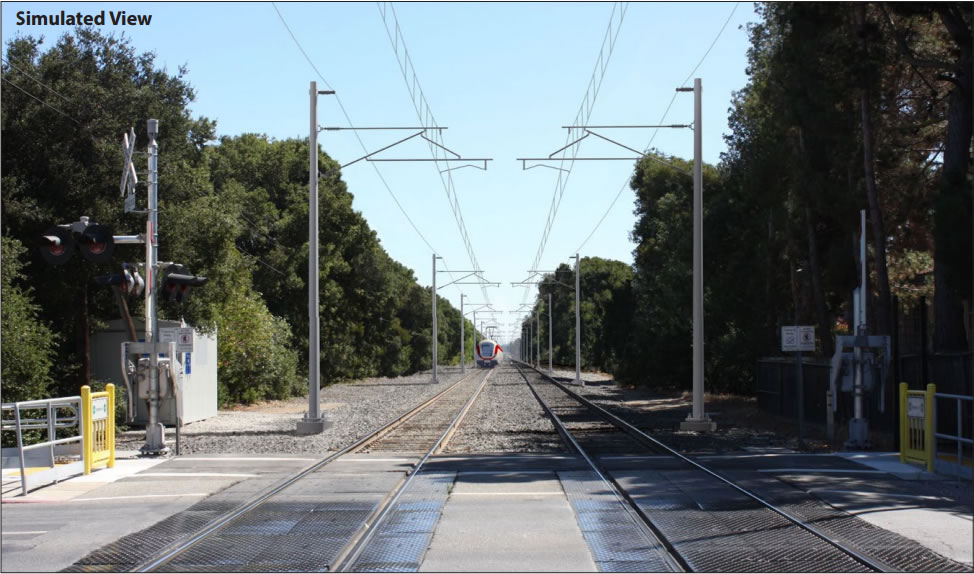
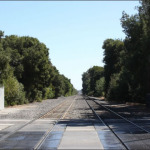
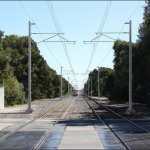
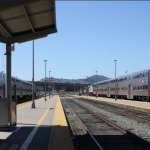
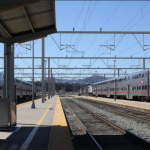
2021!!! I hope to be retired by then.
do most people in the Bay realize this service would be vastly superior to BART yet much cheaper to implement?
First, I love how the month and the year are included, like this is ever going to happen or be on “schedule.” Second, @Zig: I’m not sure if it’s vastly superior to BART. MUNI, yes. As for cost, I agree that it would be far cheaper to implement along the peninsula given that its surface route does not require a full grade separation because it uses caternary wires and track gauge is standard, unlike BART. Also, BART is more of a commuter rail/subway hybrid while Caltrain is purely commuter rail, albeit the former tends to have stations farther apart than the latter. Go figure.
With talks about a second transbay BART tube hitting the headlines this week, it certainly makes me question whether Caltrain can’t step in as the solution instead of BART. First, the tube would be standard gauge which means it could handle HSR. Second, Caltrain could run more frequent trains in SF to the west side while still operating as a commuter rail down the peninsula and in the east bay. As for the east bay, let’s just go ahead and stop the BART extension to SJ in its tracks now. Caltrain could run along the existing Amtrak/ACE tracks to tie together SJ, OAK (at Jack London Square) and downtown SF. Perhaps Caltrain ringing the Bay instead of BART. Maybe by the time this is actually operational there will be one Bay Area transit agency and people will be moving about on different types of rail infrastructure instead of disparate agencies.
Modern commuter rail like they have in Germany and Japan works better for intercity travel than does a “hybrid” system that can’t skip stops, screeches, has lower capacity and rougher ride, has a lower top speed and no bathrooms and on and on. It is way over-engineered for the suburbs and provides the riders an inferior ride.
BART is better for a quick ride from the Mission to downtown but sucks for the long distances
Put it this way. When they implement this service in San Mateo Country watch BART lose a lot of their ridership in San Mateo. Why would anyone bother with BART anymore going downtown?
Trust me, there are a lot of problems with how BART was initially built…no sidings/few track crossovers, different rail gauge, huge distances between stations, no express tracks…and the push to the outer burbs just keeps going while the dense, urban cores go neglected. Great job, BART!
As for long distance travel, BART is a mixed blessing. My friend’s commute from El Cerrito Plaza to Embarcadero is shorter than my commute from the Sunset on the L-Taraval and runs on a set schedule. Thumb’s up in my book. Bathrooms on the cars aren’t really a concern for me. At least the above ground BART stations have bathrooms. My MUNI commute does not.
When the Millbrae station opened everyone thought riders would transfer from Caltrain to BART for the last leg of their journey downtown, a longer and more circuitous route. Didn’t happen. If Caltrain ever reaches downtown you can bet even fewer riders will make the transfer.
Sure but you are comparing BART to a really bad system. If modern S-bahn like trains could go through the transbay tube I am sure the ride from El Cerrito Plaza would be even better and from a place like Bay Point no comparison.
I am too busy to look it up but I believe there is a map that shows BART as the most sprawling 3rd rail system in the world in terms of reach. It is not dense service at all and just sprawls to great distances. With anything related to public transit when we are different than the rest of the world you can be sure we are doing it wrong
I think I remember seeing that map too, but I can’t seem to find it. Yes, I know my comparisons are unjust, but I’m just working with the systems that are currently in place and know that outside the US there are far better systems. Unfortunately, none of the transit agencies are preparing the region for the projected influx of people and jobs because they don’t think transit is a priority. Come on, we still can’t get Caltrain to downtown SF….keeps getting pushed back. Officials are pushing around 2040 and 2050 dates for a variety of transit projects that should have been built 30 or 40 years ago.
Neil Freeman has some world subway systems at the same scale (namelink),
Also, Bill Rankin has a nice one of North America systems.
Judging by their looks (and some recent news stories), I thought BART cars *were* bathrooms! 🙂
As for comparing BART and Caltrain – absolutely right. We were still in San Mateo when I took my current job in the FiDi, and I anticipated taking BART from Millbrae, versus my old Caltrain commute down to Silicon Valley. But I quickly found that it was faster – and cheaper – for me to stay on Caltrain to 4th & King and *walk* to the FiDi (getting some exercise in the process) than to take the ~45 minute BART ride. So ridiculous.
If I am alive I would be amazed to see a second transbay tube built without the standard gauge tracks. It would be ludicrous for this not to carry HSR and other intercity rail
By then I will be retired and maybe I will occupy myself by throwing pies in the face for the MTC in protest
Funny, I was in the “old Country” of Eastern Europe ten years ago, and all the trains were electrified. I’m glad the Bay Area can finally catch up to Poland and Slovakia.
We should just fire everyone who has anything to do with PT in the Bay Area and hire Slovakian administrators.
Zig is completely right…if there is ever a new transbay tube, it should be for standard guage rail that could feed into the high speed rail system. The idea of magnifying mistakes with BART technology is insane. But I’ll be long since retired, and probably dead!
A bit of the mythology of BART, I was a young student in SF during the building. The awful padded seats and the atrocious “rug-like” floor covering was supposed to appeal to the 1950’s office worker commuting “bridge and tunnel”. There weren’t many hand holds for standees, just the grips on the end of the seating. One technique was to put one hand against the ceiling and sort of clamp oneself in place. The cars were produced by Rohr which was some sort of defense contractor. Reverse Military-Keynesian spending or something. The same vintage light rail were produced by Boeing. Go figure, a sad descendent of the PCC.
Isn’t NYC subway 3rd rail? Is the Bart track width used elsewhere?
BART uses the 5’6″ India gauge. I remember reading a marketing promo on BART when it was being built in the 60s. Given the poor condition of existing subways, namely NYC, designers wanted a completely different look and feel to the system. The intent was that everyone would have a comfortable seat while being whisked around the Bay Area. No need for straps or poles because no one would have to stand. Same mentality regarding flying…get dressed up, relax in comfort, amenities galore. My how things have changed since the utopian heydays.
When I was a baby my grandmother and her friends took me on BART just to ride it because it was that exciting. Like it was the future I think. I apparently slept the whole time
Reminiscent of going to Tomorrowland as a kid. Oooh, look! This is going to be future. How are they able to shrink us into microscopic beings in the ride? So cool. Heh! heh!
In China they would have this done in 18 months. Yes, there are many issues with how they do things and we don’t want to emulate it but there must be a happy medium somewhere. 2021 (which will never happen anyway) is a fogging disgrace.
Totally agree! I always wonder why government projects or public projects take very very very long to complete, & the cost is very very very very very high!
It is because many, many, many people get in the way to obstruct any project perceived as either impacting their property values. Or simply see Big Project as a Big Target to extort mitigation fees from.
“we don’t want to emulate it ”
– speak for yourself…
There’s no accountabiliy at all for this sort of delay, when is the last time someone in the public sector got fired for a timeline change, or for going over budget?
Let’s be fair people…this probably won’t become operational until after 2030
I look forward to seeing it when I visit the Bay Area from my retirement home.
The subway-rail connection hub at LAX is now forecast to be completed before this project. By the time Caltrain electrification is complete, Los Angeles will have 3 new major subway lines in operation.
C’mon everybody knows that when it comes to public works San Francisco is the “Can’t-Do” City
Don’t look now, but Southern California is way ahead of us in getting ready for HSR and better rail service. The new Anaheim ARTIC station opens this week. (Click on name for image).
It is great that this improvement is finally happening. Commutes will be faster – and the air quality in the City of SF will be greatly improved by switching from diesel to electric. But 2021? really? The transcontinental railroad was built in less time than this project. Herb Caen must rolling over in his grave. The City that used to know how now has more paperwork than common sense.
This is a long schedule for a project that requires little if not zero right of way. Is there a long environmental review process for converting from diesel to electric? Are there that many naysayers against the electrical overhead infrastructure? Or is it a matter of identifying the funding?
If electrification allows Caltrain to run more trains moving people more efficiently then the gates at grade crossings will be down more frequently causing cars to wait and idle longer causing more pollution. QED